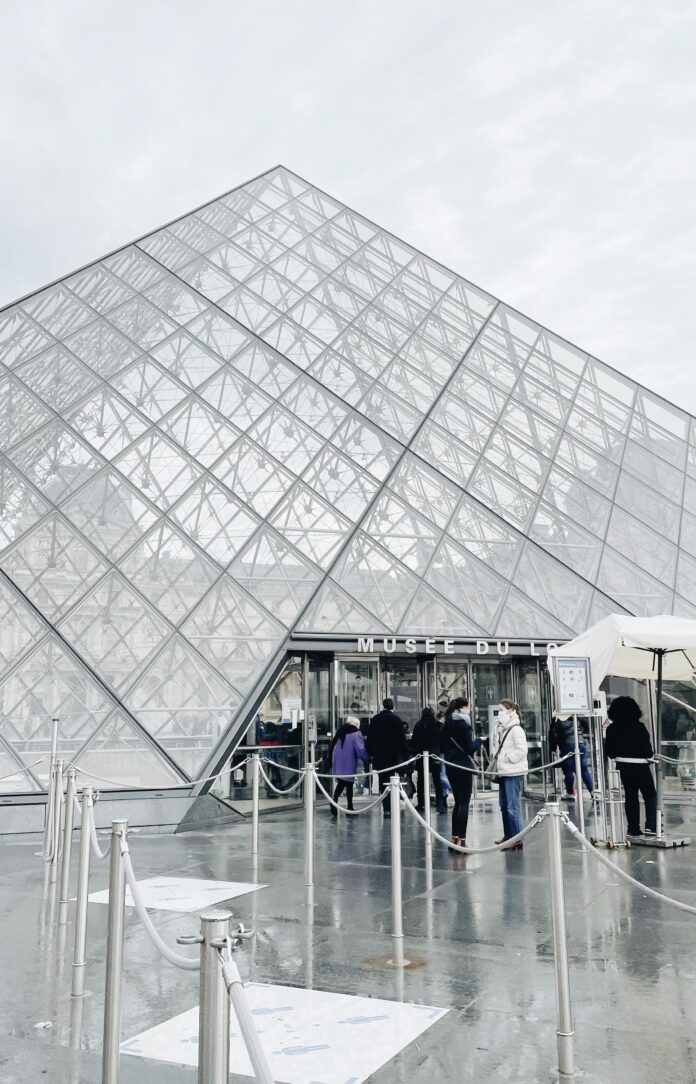In a move that has French cultural officials sighing with weary familiarity, the Louvre Museum in Paris was the scene of a spectacular jewelry heist this week. A gang of thieves, armed with power tools and what we can only assume was a comically large truck-mounted ladder, helped themselves to a selection of 19th-century royal baubles in a operation so swift it made the average coffee run look like a prolonged negotiation .
The heist, which unfolded with the precision of a Hollywood script but the aesthetic of a low-budget heist movie, has left everyone asking the same burning question: Is this going to put a dent in Paris’s tourism? The short answer is: probably not. If anything, it adds a dash of thrilling criminal lore to a city already saturated with romance, art, and overpriced pastries.
The Heist: Less “Ocean’s Eleven,” More “Scooby-Doo”
Let’s set the scene. It’s a calm Sunday morning at the world’s most visited museum. Tourists are queuing, guards are shushing, and the Mona Lisa is maintaining her enigmatic smile. Suddenly, a truck pulls up sporting a mechanical lift. Men in hi-vis vests—the universal uniform of Invisibility—ascend to a first-floor window .
With angle grinders in hand, they sliced through the window, burst into the Apollo Gallery, and threatened guards before smashing display cases containing jewels of “inestimable” value . The whole affair, from ladder ascent to grand escape on waiting scooters, took a breezy seven minutes . They were in and out faster than a tourist realizing the line for the Louvre’s bathroom is longer than the one for the museum itself.
In their haste, the thieves dropped one of the most valuable items: the crown of Empress Eugénie, a piece adorned with 1,354 diamonds and 56 emeralds . It was found damaged on their escape route, a clumsy move that undermines their otherwise slick operation . So much for a clean getaway. One can imagine a frantic argument on a speeding scooter: “Pierre, you had one job! One job! Hold onto the sparkly hat!“
A Storied History of “Oopsie-Daisies” at the Louvre
This is far from the Louvre’s first rodeo with light-fingered visitors. The museum’s most famous theft occurred in 1911, when an Italian handyman named Vincenzo Peruggia simply lifted the Mona Lisa off the wall, hid it under his coat, and walked out . The two-year manhunt that followed famously catapulted the painting from relative obscurity to global superstardom . The Louvre might want to consider that their security lapses are, historically, a fantastic marketing strategy.
More recently, in 1983, a set of 16th-century armor was stolen, only to be returned nearly 40 years later in 2021 . One imagines the thief finally returning it with a note: “Sorry for the delay, lost the receipt.”
So, while politicians are currently falling over themselves to call this latest event a “humiliation” and an “attack on our history” , it’s really just business as usual for a museum that has been dealing with audacious art lovers for centuries.
Will Tourism Take a Hit? Mais Non!
Let’s be real. The idea that this heist will scare tourists away from Paris is about as likely as a French baker running out of baguettes.
- The Numbers Don’t Lie: Paris is a tourism juggernaut. In 2023, it welcomed a staggering 47.5 million visitors, with the Louvre alone drawing 8.7 million people . Americans made up 13% of the Louvre’s guests, proving that a little daylight robbery is no match for the allure of seeing a small, famous painting behind bulletproof glass .
- The “Forbidden Fruit” Effect: If anything, the heist makes the Louvre more intriguing. Suddenly, the Apollo Gallery isn’t just another room with old stuff; it’s a crime scene. Visitors will now flock to the very spot where the robbery occurred, taking selfies and wondering, “Was it this case? Or THAT one?” It adds a narrative. Tour guides will be incorporating the tale into their spiels for years to come. “And on your left, you’ll see a window that was once brutally violated by a power tool…”
- The Real Threats to a Tourist’s Sanity: The truth is, tourists in Paris face far greater dangers than a handful of jewel thieves. These include:
- The Perilous Pilgrimage to the Mona Lisa: Navigating the scrum of bodies in the Salle des États to catch a glimpse of a tiny, distant painting has been described by the Louvre’s own president as a “physical ordeal” . A seven-minute heist is a swift affair; the queue for the bathroom is a test of human endurance.
- Overpriced Everything: A tourist is far more likely to be robbed by a café charging €10 for a Coca-Cola than by a gang on scooters.
- Crowd-Induced Claustrophobia: The museum has been begging for help with overcrowding, water leaks, and “very deteriorated” spaces . A few thieves are a minor nuisance compared to the existential threat of being slowly crushed by a tour group from a cruise ship.
The Future: More Security, But Mostly More Tourists
Of course, the French government is in a tizzy. The justice minister lamented, “We have failed” . An investigation is underway, and a pre-existing €700-800 million renovation plan for the Louvre, which includes security upgrades, will likely be accelerated . The plan even involves building a dedicated room for the Mona Lisa by 2031, presumably to make it even harder to steal, though we’re sure someone will still try .
So, fear not, prospective visitor! Paris remains open for business. You can still scale the Eiffel Tower, wander along the Seine, and enjoy a glass of wine while reading a news article about the bumbling criminals who tried to steal a nation’s heritage and ended up dropping the crown. The City of Light has always had a hint of shadow, and a little drama only makes the story better. Just remember to hold onto your bags—the pickpockets are still a much bigger threat than any jewel thief.



